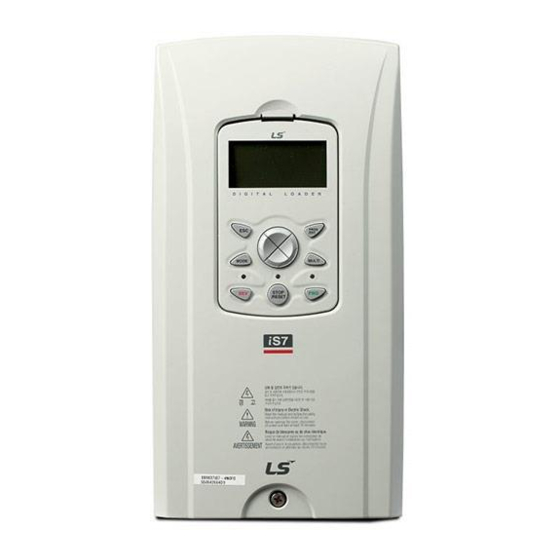
Table of Contents
Advertisement
Quick Links
Safety Instructions
To prevent injury and property damage, follow these instructions.
Incorrect operation due to ignoring instructions will cause harm or
damage.
The seriousness of which is indicated by the following symbols.
Symbol
Warning
Caution
Even if the instructions are indicated as 'Caution', it can cause a serious
result according to the kind of operation and the environment.
The meaning of each symbol in this manual and on your equipment
is as follows.
Symbol
After reading this manual, keep it in the place that the user always
can contact easily.
This manual should be given to the person who actually uses the
products and is responsible for their maintenance.
Do not remove the cover while power is applied or the unit is in
operation.
Otherwise, electric shock could occur.
Do not run the inverter with the front cover removed.
Otherwise, you may get an electric shock due to high voltage terminals or
charged capacitor exposure.
This symbol indicates the possibility of death or
serious injury.
This symbol indicates the possibility of injury or
damage to property.
Remark
This is the safety alert symbol.
Read and follow instructions carefully to avoid
dangerous situation.
This symbol alerts the user to the presence of
"dangerous voltage" inside the product that might
cause harm or electric shock.
WARNING
Safety Instructions
Meaning
Meaning
i
Advertisement
Table of Contents







Need help?
Do you have a question about the SV0008iS7-2 and is the answer not in the manual?
Questions and answers